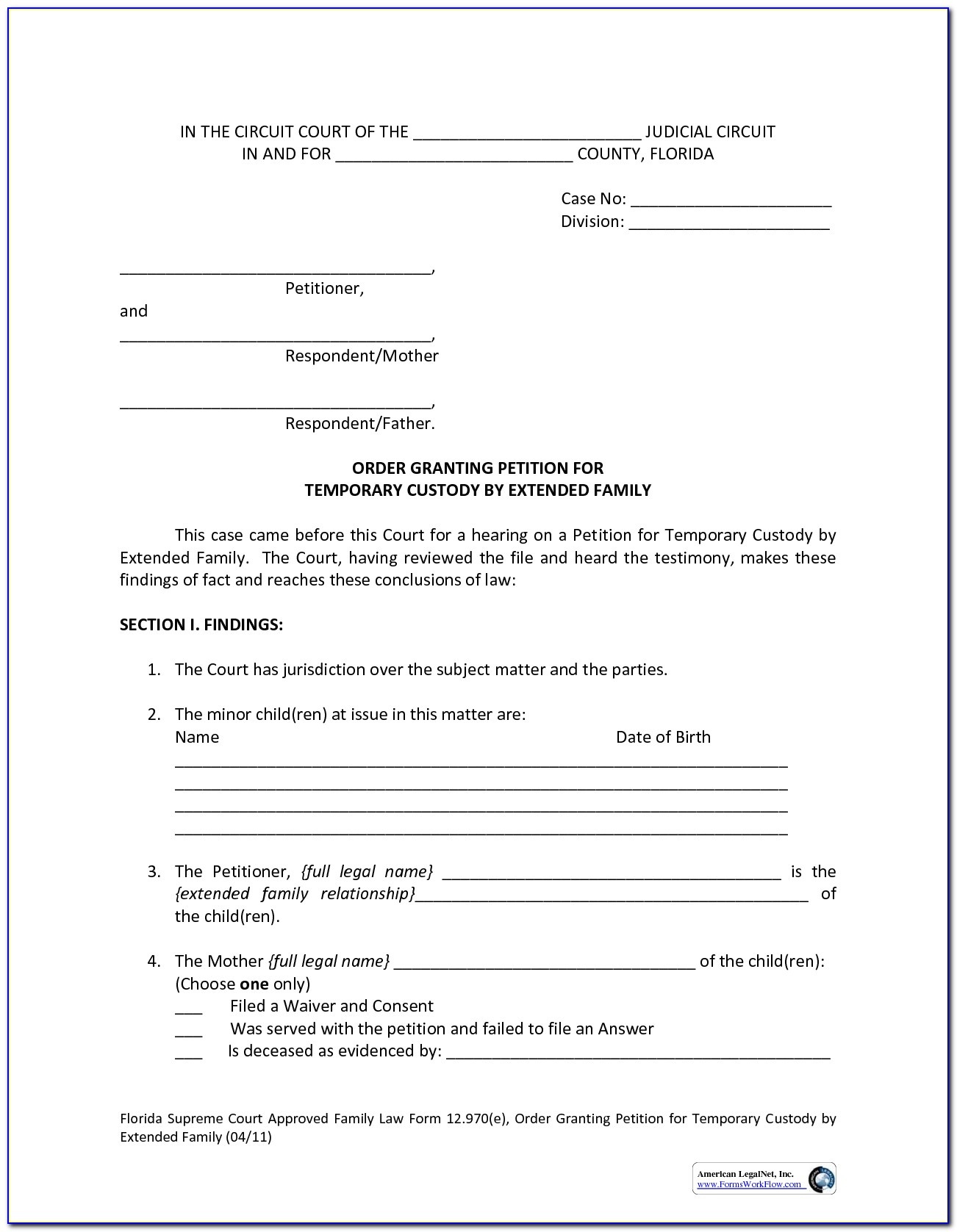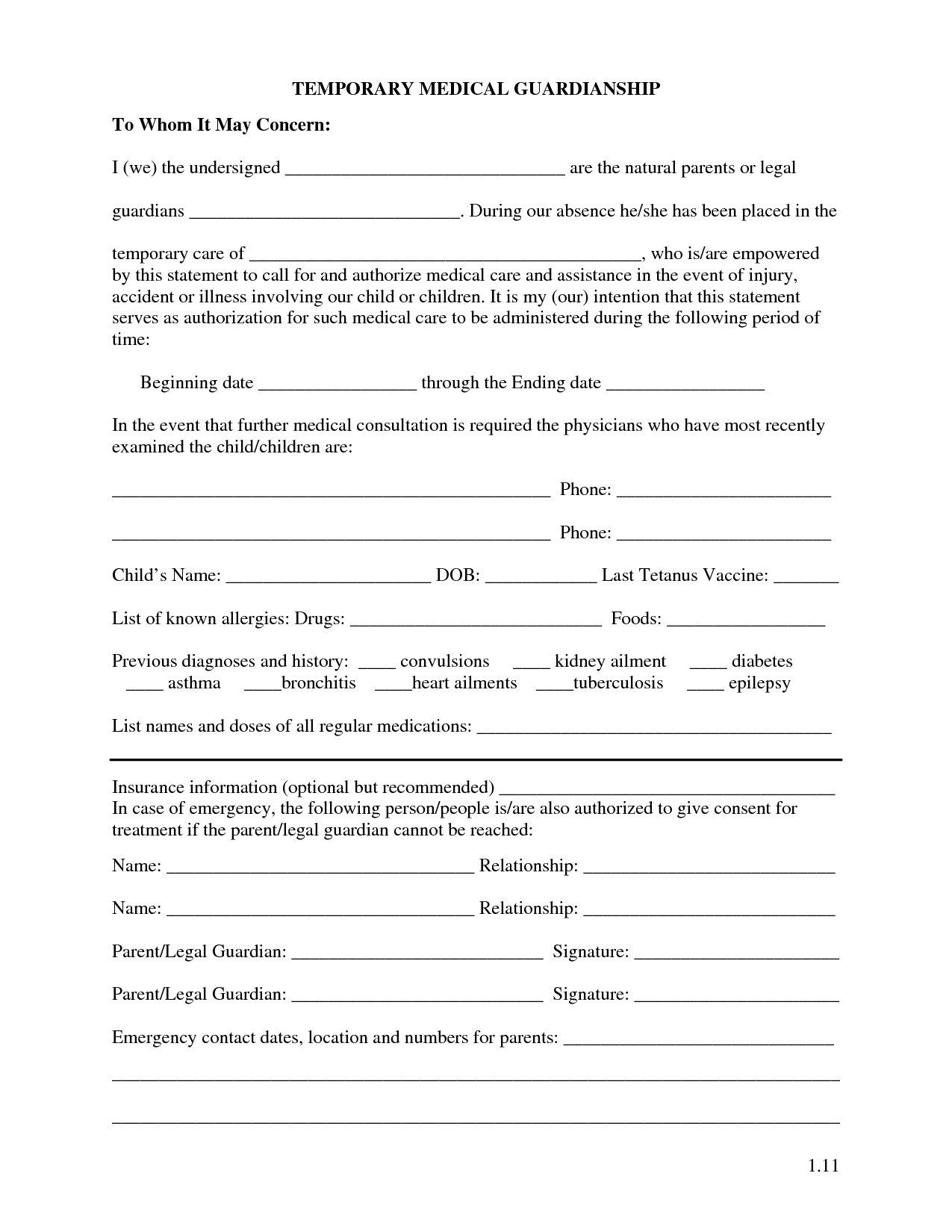As responsible adults, we understand that it is our duty to ensure the safety and well-being of children around us. When it comes to taking care of a child in the absence of their parents, it is important to have legal documentation in place to avoid any confusion or misunderstandings in the future. One such document is a guardianship form, which allows a non-parent to act as a temporary or permanent guardian of a child. In this article, we will explore what guardianship forms are, their types, and how to choose the right one for your situation.
Temporary Guardianship Forms
Temporary guardianship forms are used when a child needs temporary care in the absence of their parents. These can be used for a variety of reasons such as medical emergencies, travel, or other personal circumstances. The duration of the guardianship can be specified in the document and can range from a few days to several months.
 Temporary guardianship forms can be easily downloaded from various online sources. They usually include information such as the child’s name, the guardian’s name, contact details, and the duration of the guardianship. It is important to ensure that the form is notarized and signed by both the parent/s and the temporary guardian to make it legally binding.
Temporary guardianship forms can be easily downloaded from various online sources. They usually include information such as the child’s name, the guardian’s name, contact details, and the duration of the guardianship. It is important to ensure that the form is notarized and signed by both the parent/s and the temporary guardian to make it legally binding.
Permanent Guardianship Forms
Permanent guardianship forms, as the name suggests, are used when a non-parent wants to become the permanent legal guardian of a child. This can happen in situations where the child’s parents are incapable of taking care of them due to illness, death, or other reasons. Permanent guardianship forms are more complex than temporary ones and require legal advice to ensure that all legal requirements are met.
 Permanent guardianship forms may require additional information such as the reason for seeking guardianship, details of the child’s living arrangements, and the guardian’s financial status. It is important to consult a lawyer to ensure that all legal requirements are met and that the form is legally binding.
Permanent guardianship forms may require additional information such as the reason for seeking guardianship, details of the child’s living arrangements, and the guardian’s financial status. It is important to consult a lawyer to ensure that all legal requirements are met and that the form is legally binding.
Conditional Guardianship Forms
Conditional guardianship forms are used when a parent wants to give temporary guardianship of their child to a non-parent for a specific purpose or for a limited time. These can be used for situations such as a child traveling with a relative or friend, or attending a summer camp. The form can specify the conditions under which the guardianship is given and can include details such as the duration of the guardianship and the responsibilities of the guardian.
 Conditional guardianship forms should be notarized and signed by both the parent/s and the guardian to make it legally binding. It is also advisable to keep a copy of the form with the child’s school/nursery and the child’s doctor in case of an emergency.
Conditional guardianship forms should be notarized and signed by both the parent/s and the guardian to make it legally binding. It is also advisable to keep a copy of the form with the child’s school/nursery and the child’s doctor in case of an emergency.
Choosing the Right Guardianship Form
Choosing the right guardianship form is important to ensure that your child is legally protected in your absence. The type of form you choose will depend on your specific situation and requirements. Here are some tips to help you choose the right form:
- Determine the duration of the guardianship: If you only need temporary guardianship for a few days or weeks, a temporary guardianship form would be appropriate.
- Determine the purpose of the guardianship: If you want to give guardianship to a non-parent for a specific reason or purpose, a conditional guardianship form would be appropriate.
- Determine if you need permanent guardianship: If you are unable to take care of your child due to illness or other reasons, a permanent guardianship form would be appropriate.
- Consult with a lawyer: If you are unsure of which form to choose or if your situation is complex, it is advisable to consult a lawyer.
Conclusion
A guardianship form is a legal document that allows a non-parent to act as the legal guardian of a child in the absence of their parents. These forms can be used for a variety of situations such as temporary care, permanent care, or conditional care. It is important to ensure that the form is notarized and signed by both the parent/s and the guardian to make it legally binding. Choosing the right form will depend on your specific situation and requirements, and it is advisable to consult a lawyer if you are unsure. By taking the time to put a guardianship form in place, you can ensure that your child is legally protected and their well-being is taken care of in your absence.